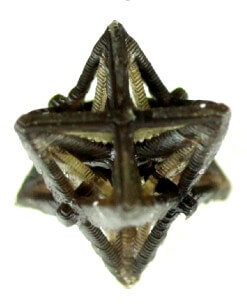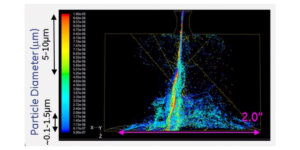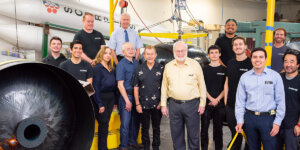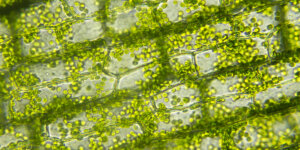
Photo courtesy of USC Viterbi
Qiming Wang, assistant professor in the Sonny Astani Department of Civil and Environmental Engineering, and his research team have developed a material that contracts when heated, completing their first step towards a material that is unresponsive to heat.
Typical materials, like those used to make buildings or bridges, expand when they get hot. For this reason, expansion joints are needed to allow the materials to swell without buckling. In cases with mismatched materials, like cook tops and dental fillings, one material will expand faster than another, causing it to crack.
“We wanted to solve all these thermal mismatch problems,” Wang said. “Imagine if you can design some material that has zero expansion, no expansion at all.”
Their work, in collaboration with Christopher Spadaccini of the Lawrence Livermore National Laboratory and Associate Professor Nicholas Fang from Massachusetts Institute of Technology, was sponsored by the National Science Foundation Manufacturing Machines and Equipment program and the DARPA Materials with Controlled Microstructural Architectures program. “Physical Review Letters” on October 21 published an article detailing their findings.
Before being able to create a material with zero thermal expansion, the team first created a composite material that contracts when heated. For this, Wang designed a novel manufacturing technique that enables the user to 3-D print a structure consisting of more than one material. In their process, thin layers of liquid are solidified by UV light one layer at a time, switching between the different materials. This creates a 3-D structure of any design with as many materials as they need.

Fabricated negative thermal expansion lattice, consisting of PEGDA plastic (tan) and PEGDA with copper (black). Image courtesy of Qiming Wang
“There are indeed a number of structures showing negative thermal expansion in the literature. However, they are primarily in a 2-D layout, as fabricating 3-D negative thermal expansion materials is still challenging,” Wang said. “However, our new additive manufacturing technology can really turn the challenging task to an easy one.”
For Wang’s contracting material, he only needed two materials—PEGDA hard plastic and PEGDA reinforced with copper particles. By designing a 3-D lattice structure, consisting of beams oriented at certain angles, they were able to take advantage of the materials’ typical expansion behavior. As the two materials expand at different rates, the beams are pulled inward, making the structure as a whole contract.
“Overall, the structure will contract in volume, rather than expand in volume,” Wang said. “That’s the basic mechanism.”
The degree of contraction can be fine-tuned by altering the amount of copper particles in the reinforced PEGDA or by altering the angles of the beams. In this way, the material can be manipulated to achieve the desired performance, and even zero thermal expansion.
Wang believes that this is just one way of obtaining their final goal. The other is by combining their novel material with another.
“We can design a zero expansion material by creating a composite of a positive expansion material with a negative inside it. Then you can achieve zero,” Wang said. “This was the first step. You first design a negative, and then you try to create a composite of these two to achieve zero. That will be the next step of the research.”
Published on October 28th, 2016
Last updated on March 10th, 2017












